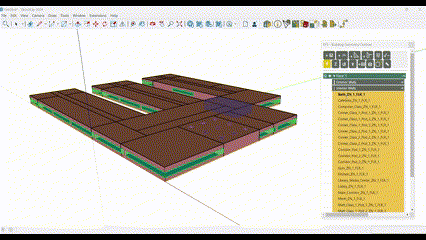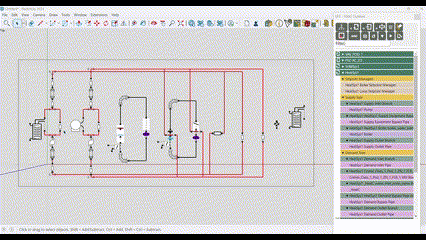What Is the 179D Deduction?
The 179D deduction, officially known as the Energy-Efficient Commercial Buildings Deduction, is a federal incentive designed to encourage energy savings in commercial and government buildings. Qualifying building upgrades, whether in HVAC systems, lighting, or overall building envelope improvements, can mean significant tax savings. For organizations that want to demonstrate sustainability while directly benefiting the bottom line, 179D is a valuable tool.
Why CFOs Should Care
1. Substantial Tax Deductions
Qualifying for the 179D deduction can mean up to $1.88 per square foot in deductions. For larger buildings, these savings can scale quickly, directly reducing taxable income. Imagine the impact of these savings across a portfolio of properties—it’s a straightforward way to turn energy-efficient initiatives into real financial gains.
2. Cash Flow Optimization
By leveraging 179D, businesses can free up capital that would otherwise be spent on taxes. This can provide a boost in cash flow, allowing your organization to reinvest in other areas. Whether it's funding additional projects or improving operational flexibility, this deduction offers a tangible way to keep more cash on hand.

3. ESG Compliance and Enhanced Corporate Reputation
With investors and stakeholders increasingly prioritizing environmental, social, and governance (ESG) criteria, participating in 179D projects can support your organization's ESG goals. Achieving these benchmarks not only improves the company’s image but can also be advantageous in securing funding and enhancing stakeholder trust.
How to Determine Eligibility
For many, navigating the requirements of the 179D deduction may seem daunting. Eligibility involves meeting specific energy-saving benchmarks verified by a licensed professional. Key areas often include:
- Lighting Systems: Efficient lighting reduces energy consumption, contributing to significant long-term savings.
- HVAC Systems: Heating and cooling systems are a major energy expense. Upgrades in this area can quickly add up in deductions and energy savings.
- Building Envelope: Improvements in insulation, windows, and walls can make a building more efficient, minimizing both heating and cooling costs.
How Designers Can Claim the 179D Deduction
For designers and architects who work on energy-efficient upgrades for government-owned buildings, the 179D deduction presents a unique financial opportunity. Since government entities typically don't benefit from tax deductions, the IRS allows designers responsible for the energy-efficient elements of these buildings to claim the deduction instead. This includes architects, engineers, and other design professionals involved in key improvements.
1. Eligibility Criteria for Designers
To qualify, designers must be directly involved in creating and implementing energy-efficient features, such as lighting, HVAC, and building envelope components, that meet 179D’s efficiency standards. The government agency owning the building must allocate the deduction to the designer, and only one designer per project can claim the deduction. The energy savings achieved must be certified by a licensed professional to ensure compliance with IRS guidelines.
2. Financial Impact for Design Professionals
The 179D deduction allows designers to receive up to $1.88 per square foot on qualifying projects, which can quickly add up, especially on larger government facilities. This benefit not only rewards sustainable design work but also helps firms offset project costs and improve overall profitability.
3. Advantages Beyond the Financials
Beyond the deduction itself, claiming 179D can set design firms apart by demonstrating a commitment to sustainable practices. Government contracts often look for firms with a track record in energy-efficient design, making 179D a potential differentiator in competitive bidding processes.
Getting Started: If you're a designer looking to leverage the 179D deduction, it’s essential to understand the technical requirements and work closely with energy modeling experts who can guide you through the certification and allocation process. Our team specializes in helping designers maximize their deductions by ensuring accurate modeling and compliance, taking the guesswork out of the process.
Getting Started: What to Look for in a Partner
Partnering with the right team can simplify the process. Look for experts who can provide energy modeling, technical expertise, and end-to-end management of the certification process. We work closely with clients from various sectors, ensuring accurate modeling and compliance with 179D requirements.
Our team brings over 150 years of experience in energy-efficient tax incentives, successfully guiding CFOs and finance teams through every step, from initial consultation to final certification. With a hands-on approach, we help ensure that your building upgrades not only qualify for the deduction but also maximize the financial benefits.
Conclusion: Transform Your Tax Strategy with 179D
The 179D deduction is more than a tax incentive; it’s a strategic asset. As energy efficiency continues to grow in importance, now is the time to explore how your organization can benefit. By aligning with an experienced partner, you can unlock significant savings, boost cash flow, and strengthen your company’s commitment to sustainability.
Ready to explore how 179D can transform your tax strategy? Contact Us Today for a free consultation, and let's make energy efficiency work for your bottom line.




